
Table of Contents
Planters have changed the way we approach gardening, making it easier than ever to maintain our gardens lush green. Among the various types available, self-watering planters stand out as a game-changer in garden automation. With a built-in water reservoir at the base, these planters employ capillary action, allowing plants to access water as needed. The result? A garden – alleviating the stress associated with gardening chores.
Imagine the convenience of having your garden on autopilot, as the self-watering planters ensure that your plants receive the right amount of hydration without constant manual intervention. Gardening lovers can now embrace a more relaxed and enjoyable approach to cultivating their outdoor spaces.
Moving beyond the convenience of self-watering planters, another noteworthy option is the realm of large outdoor planters. While not everyone’s preference, these sizable containers make a striking statement in settings like farmhouses, corporate spaces, public squares, and private gardens. The beauty lies not just in their size but in the possibilities they offer. Large outdoor planters accommodate substantial plant life, from bushes to full-grown trees, creating a visual spectacle that captivates people of all ages.
1. Self Watering Planters
This sounds great. As most of the chores in the house are automatic now, this is to put your garden maintenance on auto mode. Gardener’s stress definitely is going to be lowered. In this method, there is a water reservoir in the bottom of the planter which can be utilized by the plant when required via capillary action.
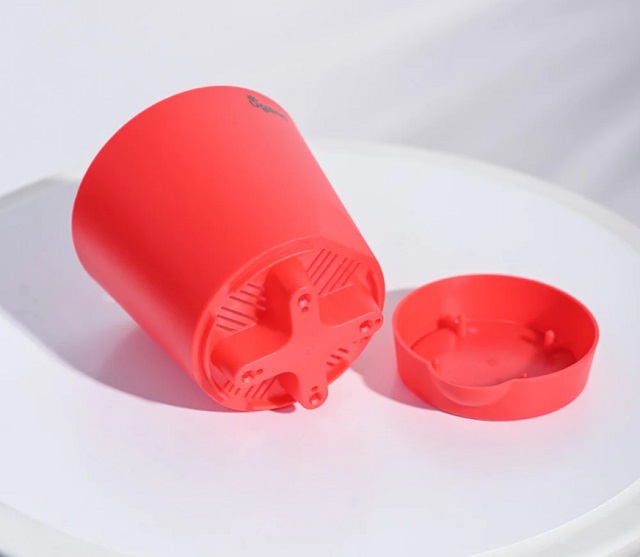
2. Large Outdoor Planters
Large outdoor planters may not be everyone’s choice but those who own big farmhouses, corporate houses, public squares, and private gardens do prefer large outdoor planters. Large outdoor planters make a stunningly beautiful statement. When you have large outdoor planters installed you have various options, you can plant bushes or even a full-grown tree. Giant sizes fascinate all the time and all age people. The large outdoor planters also come with self-watering arrangements to reduce the amount of work one has to do to water the plants daily. Sometimes, moving these large planters could be challenging as the planters tend to get heavier with full-grown roots and plants. Adding something wheeled at the bottom could reduce your work and give you the flexibility to keep changing your atmosphere.
As far as the choice of materials goes, plastic remains the popular choice because it offers as lighter option. Longevity could be a challenge and might shift you to opt for resin planters.
3. Hanging Planters
The hanging planters would be used where there is no space to place planters. Usually hanging planters are used to bring life and freshness to your balcony. No doubt, these hanging planters add a unique touch to your outdoor space at the same time being visually appealing.
Choosing the right planter depends upon the size and shape of your balcony, your taste, and the space you intend to enhance.
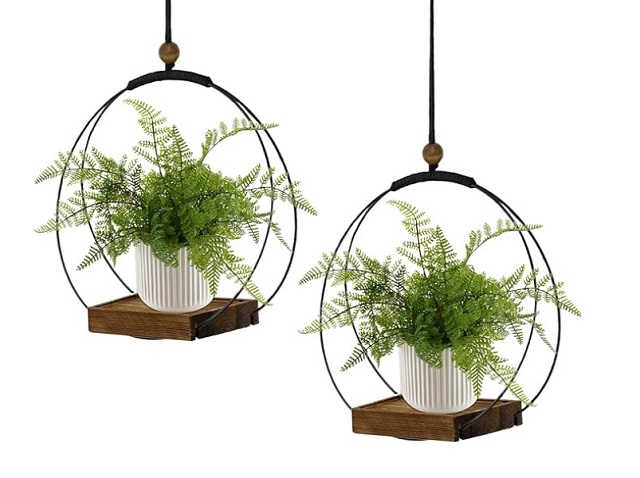
4. Tall Planters
Picture your front porch adorned with tall planters that reflect your unique style. There’s no superior method to elevate the aesthetics of your designated spaces than by incorporating tall planters. These uncomplicated additions work wonders in metamorphosing your entrance, establishing a captivating focal point that will surely make a lasting impression on your guests. Enhance your doorway by planting palm trees in lofty planters, crafting a mesmerizing vista.
If your porch lacks the space for tall planters, consider arranging them on your steps instead.
5. Railing Planters
Railing planters serve as decorative planters designed for attaching to railings, enhancing the vibrancy of your deck area. If you’re a gardening enthusiast with limited space to realize your gardening dreams, railing planters present the ideal solution. They offer the perfect opportunity to cultivate colorful flowers and herbs, providing a delightful addition to your culinary endeavors.
The choice of materials for your railing planter is a decision best made based on your preferences and practical considerations. Additionally, you have the creative freedom to craft your own planters using common household items such as bowls and jugs.
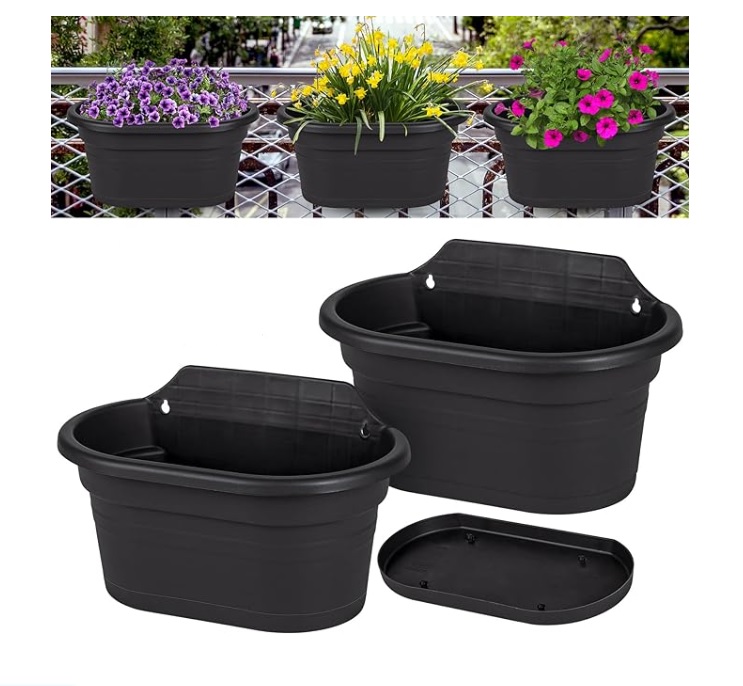
6. Window boxes
Window box Planters are sort of containers that are arranged below the window to give the window a defining look. Imagine all the windows lined with window boxes having colorful flowers. Creating a window box is an art and the professional do it perfectly depending on the full sun or shade the window box is likely to receive.
You can create your own window box by using about 5 to 7 plants to play with a variety of plants or colors. For instance, you can create a window box by arranging petunias alone in multiple colors. When you want to add variety, as a rule of thumb put the trillers, fillers & spiller plants.
I liked the secret window box recipe of “ The Lawrence Garden Farm”, a YouTube Channel for which the like is shared below-
In this video, the varieties included to make this awesome window box are Main Street Ruby Coleus, Jolt Pink Dianthus, Bombay Blue Scaevola, Blue Victoria Salvia, Liberty Bronze Snapdragon, Jade Princess Millet and Vista Fuchsia Supertunia.
7. Ceramic Planters
Ceramic planters come in a wide range of designs that you just can’t keep your eyes off. Ceramic makes an excellent home décor piece, available in an attractive range of colors, possess endurance and durability. When you want to directly grow your plants in ceramic planters make sure there is a drainage hole. If there is no drainage hole, you can use a liner pot or second pot which fits inside the ceramic planter.
Ceramic planters are excellent at regulating soil moisture and temperature, ensuring that your plants thrive. The maintenance of ceramic planters is easy. Give them a wet wipe externally and they shine like new ones.
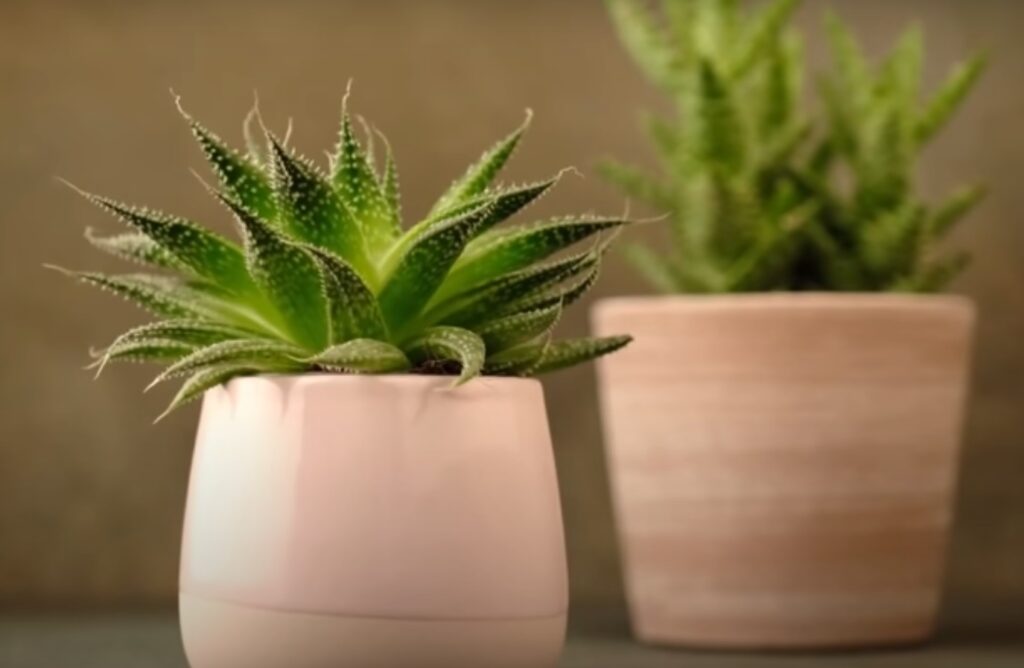
8. Wooden Planters
In my opinion, crafting wooden planters ranks high on the DIY scale due to their simplicity. My initial attempt involved repurposing low-quality wood from refrigerator packing. Despite the poor quality of the wood, I managed to create a planter. Lacking proper tools to refine the wooden strips resulted in a basic-looking planter. Surprisingly, even this simple addition enhanced the ambiance of my home.
Wooden planters aren’t designed to hold soil and plants directly; instead, they serve to encase regular planters, offering a distinct appearance. Another variant is the conical wooden planter, crafted from carved wooden logs, providing a robust base for smaller plants. These can be placed on balconies, windowsills, or work desks, adding charm to any space.
You can make your wooden planters in a day provided you have all the tools in place. Here is the DIY guideline
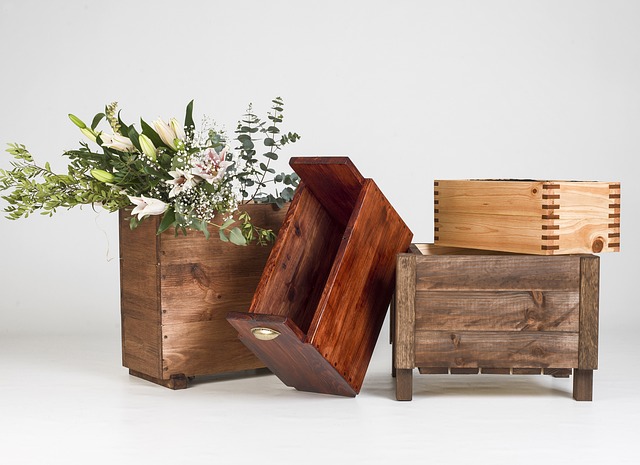
9. FAQs
Q1. What are the different types of planters available?
There are various types of planters, including ceramic, plastic, terracotta, metal, wooden, hanging, self-watering, raised bed, vertical, and window boxes, each with unique features and suitability for different plants and settings.
Q2. What are the benefits of using ceramic planters?
Ceramic planters are known for their durability, aesthetic appeal, and ability to retain moisture. They come in various colors, sizes, and designs, adding a decorative touch to indoor and outdoor spaces.
Q3. Are plastic planters suitable for outdoor use?
Yes, plastic planters are often weather-resistant and durable, making them suitable for outdoor use. They are lightweight, easy to move, and available in a wide range of shapes and sizes.
Q4. How can I maintain terracotta planters?
Terracotta planters are porous and can absorb water, so it’s essential to avoid overwatering. To maintain them, clean them with a mild detergent, avoid drastic temperature changes, and protect them from freezing in cold climates.
Q5. What are the advantages of using self-watering planters?
Self-watering planters have a reservoir that allows plants to draw water as needed, reducing the frequency of watering and preventing overwatering. They are convenient for busy individuals and can help maintain optimal moisture levels for plants.
Q6. Are raised bed planters suitable for vegetable gardening?
Yes, raised bed planters are excellent for vegetable gardening. They provide good drainage, better control of soil quality, and make it easier to manage pests while offering a comfortable height for tending to plants.
Q7. Can I use window boxes for herbs or small plants?
Yes, window boxes are perfect for growing herbs or small plants. They can be easily attached to windowsills or hung on railings, allowing for convenient access to fresh herbs and adding beauty to windows.
Q8. How do I choose the right planter size for my plants?
The planter size should accommodate the plant’s root system and provide ample space for growth. Generally, choose a container that is slightly larger than the plant’s current root ball to allow for expansion.
Q9. What are the best plants for hanging planters?
Plants with trailing or cascading growth habits, such as pothos, ivy, spider plants, or petunias, are ideal for hanging planters. These plants create a beautiful hanging display as their foliage spills over the edges.
Q10. Can I repurpose household items as planters?
Yes, many household items like old buckets, tin cans, baskets, or even mason jars can be repurposed as planters with proper drainage. Ensure they are clean, have drainage holes, and are suitable for the specific plant’s needs.